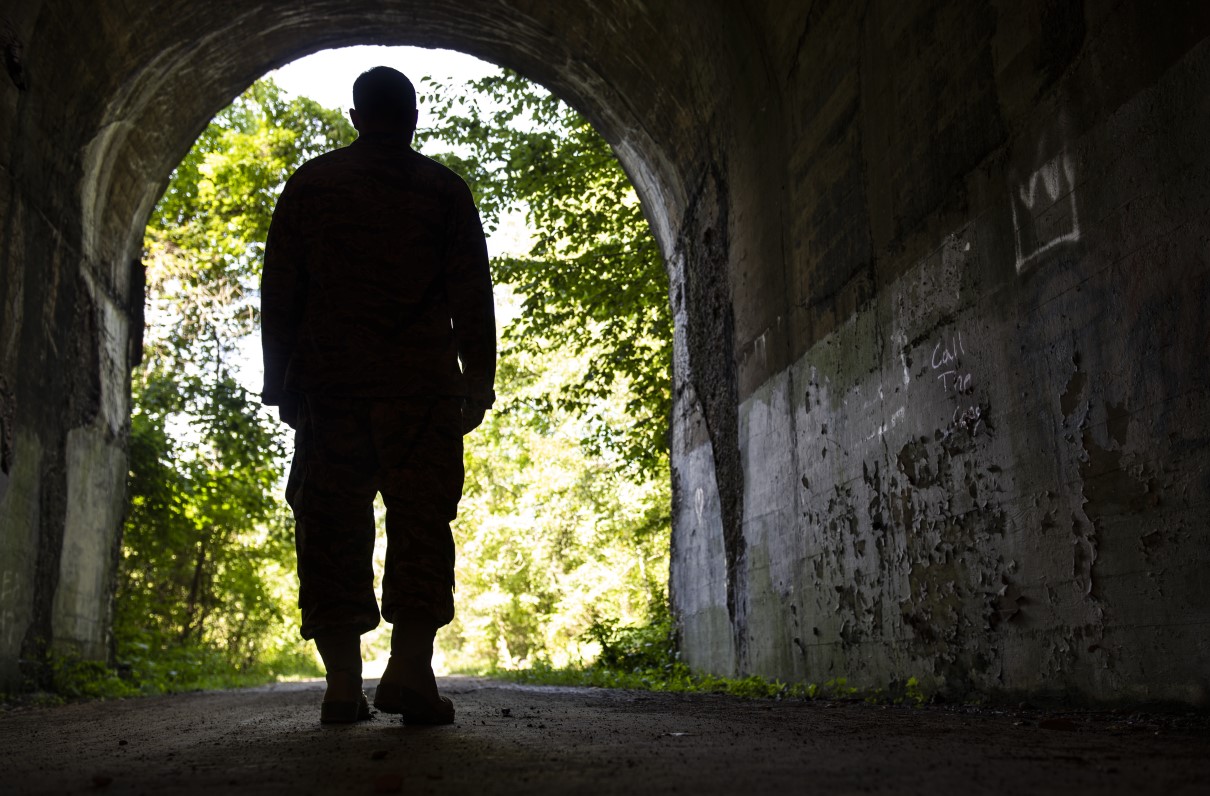Note from MOAA: If you or someone you know is in crisis, contact the Veterans Crisis Line at 1-800-273-8255 (press 1) or via www.veteranscrisisline.net.
MOAA leadership recently reaffirmed the organization’s pledge to continue its work on a national plan to connect veterans in distress and facilitate research into suicide.
Lt. Gen. Dana T. Atkins, USAF (Ret), President and CEO of MOAA, joined a virtual meeting with VA leaders Nov. 5 to sign a commitment to actively engage association employees and members in suicide prevention efforts and to increase the awareness of mental health issues. The commitment is part of the VA initiative known as the President’s Roadmap to Empower Veterans and End a National Tragedy of Suicide (PREVENTS), signed by President Donald Trump on March 5, 2019.
“We’re all in,” Atkins said during the virtual meeting. “We’ve been involved in the administration’s PREVENTS map from the start. I’m convinced if we at least involve ourselves, talk to people, check on people, that we’re going to contribute to hopefully reducing the incidents of suicides.”

Lt. Gen. Dana T. Atkins, USAF (Ret), President and CEO of MOAA, holds up the pledge he signed to combat veteran suicide during a virtual meeting with Jill Snyder (center), director of communications for the VA’s Board of Veterans Appeals, and Cheryl Mason (right), national ambassador of the PREVENTS Task Force and chair of the VA’s Board of Veterans Appeals. (Screenshot)
Atkins was invited to the White House to witness the signing of the initiative last year. He has emphasized the significance of military members continuing to support each other, thinking back on his time as a commander for the 20th Fighter Wing at Shaw Air Force Base, S.C.
[GET INVOLVED: Join the VA’s PREVENTS Initiative]
That’s where he met a civilian staff member who would later confide in him that she previously had suicidal ideations. The interaction struck him, Atkins said, as it reinforced that obvious signs of distress are not always apparent. Checking in with friends and family can be a lifeline for people who may not outwardly show signs of distress, he said.
“You don’t see it unless you’re engaged,” he said. “That’s the intersection where I think we can help – through discussion and caring.”
Death by suicide affects civilians and servicemembers. The VA conducts the largest national analysis of veteran suicide rates each year, according to the department. Between 2008 and 2017, more than 6,000 deaths of veterans were determined to be suicides.
DoD has its own initiatives to support active duty servicemembers, while the PREVENTS concept is aimed toward veterans. It offers recommendations on how to best equip state and local governments, engage faith-based communities, and expand the existing research ecosystem to continue to refine treatments and improve veteran engagement efforts.
Cheryl Mason, national ambassador of the PREVENTS Task Force and chair of the VA’s Board of Veterans Appeals, thanked MOAA for its continued commitment to support veterans by creating awareness.
Moving forward, MOAA has pledged to continue education efforts through publications to inform members and encourage chapter and council involvement at the state and local level. MOAA’s government relations team will work with the national task force to develop and support policies to improve suicide prevention and community collaboration and integration.

